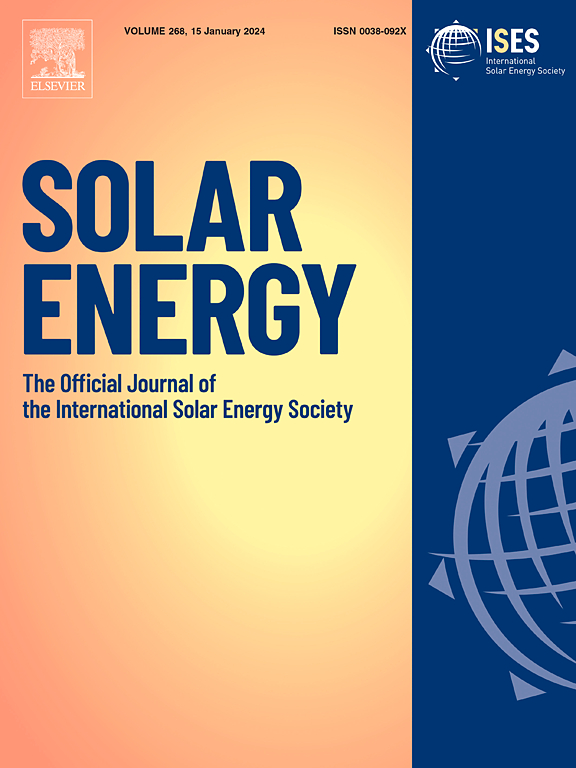寒冷及严寒地区农村建筑太阳能-空气源热泵耦合系统设计参数及运行条件优化
IF 6
2区 工程技术
Q2 ENERGY & FUELS
引用次数: 0
摘要
将太阳能利用整合到空气源热泵供暖系统中,可以有效降低能源消耗。然而,耦合系统的复杂性给系统性能优化带来了挑战。本文采用TRNSYS软件,对一种用于寒冷(北京)和严寒(长春)地区供热的太阳能-空气源热泵耦合系统进行了开发和分析。采用响应面法(RSM)建立不同性能指标的回归模型,然后采用非支配排序遗传算法- ii (NSGA-II),通过Pareto最优解集求解交互性能参数的多目标优化问题。研究发现,能源消耗(P)、太阳能保证率(Ar)和太阳能蓄热罐供热与建筑负荷之比(Hs)等性能指标的回归模型与太阳能集热器面积(A)和蓄热罐容积(Vl为太阳能集热器回路,v为空气源热泵回路)密切相关。得到的Pareto集合成功地平衡了交互性能指标的最优值。在寒冷地区,与单一空气源热泵系统相比,耦合系统的P、Ar、Hs分别可提高31.79%、33.00%和40.07%。而在严寒地区,这些改善分别为16.25%,15.35%和28.38%。本研究的设计方法和优化步骤为太阳能与辅助热源耦合加热系统的优化提供了依据。本文章由计算机程序翻译,如有差异,请以英文原文为准。
Optimization of design parameters and operation conditions of solar-air source heat pump coupled system for rural buildings in cold and severe cold regions
Integrating solar energy utilization into air source heat pump heating systems can effectively cut down on energy consumption. However, the complexity of coupled systems poses a challenge to system performance optimization. In this paper, a solar-air source heat pump coupled system designed for heating in cold (Beijing) and severe cold (Changchun) regions is developed and analyzed by TRNSYS software. Response surface methodology (RSM) is employed to establish regression models for different performance indicators, and then the non-dominated sorting genetic algorithm-II (NSGA-II) is adopted to solve the multi-objective optimization of interactive performance parameters through Pareto optimal solution set. The regression models of the performance indicators, i.e., the energy consumption (P), the solar energy assurance rate (Ar) and the ratio of heating supply from solar energy storage tank to building load (Hs), are found to be closely related to the area of solar collectors (A) and the volumes of storage tanks (Vl for solar collector loop and Vs for ASHP loop). The obtained Pareto set successfully balances the optimal values of interactive performance indicators. In cold regions, P, Ar, Hs of the coupled system can be improved respectively by 31.79%, 33.00% and 40.07% compared to the single air source heat pump system. While in severe cold regions, these improvements are 16.25%, 15.35% and 28.38%, respectively. The design method and optimization procedure of this study provide a basis for the optimization of the solar and auxiliary heat source coupled heating systems.
求助全文
通过发布文献求助,成功后即可免费获取论文全文。
去求助
来源期刊

Solar Energy
工程技术-能源与燃料
CiteScore
13.90
自引率
9.00%
发文量
0
审稿时长
47 days
期刊介绍:
Solar Energy welcomes manuscripts presenting information not previously published in journals on any aspect of solar energy research, development, application, measurement or policy. The term "solar energy" in this context includes the indirect uses such as wind energy and biomass
 求助内容:
求助内容: 应助结果提醒方式:
应助结果提醒方式:


